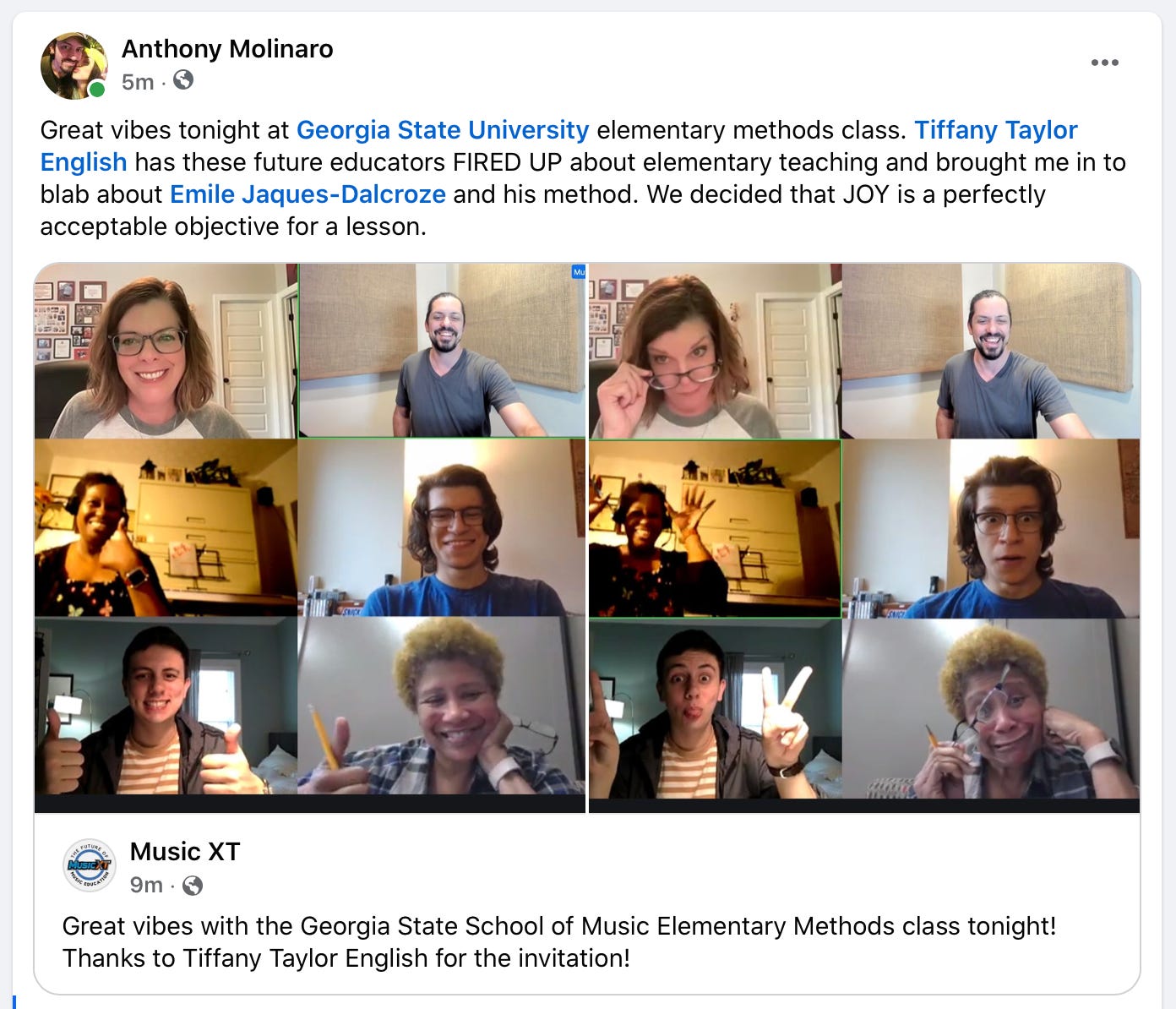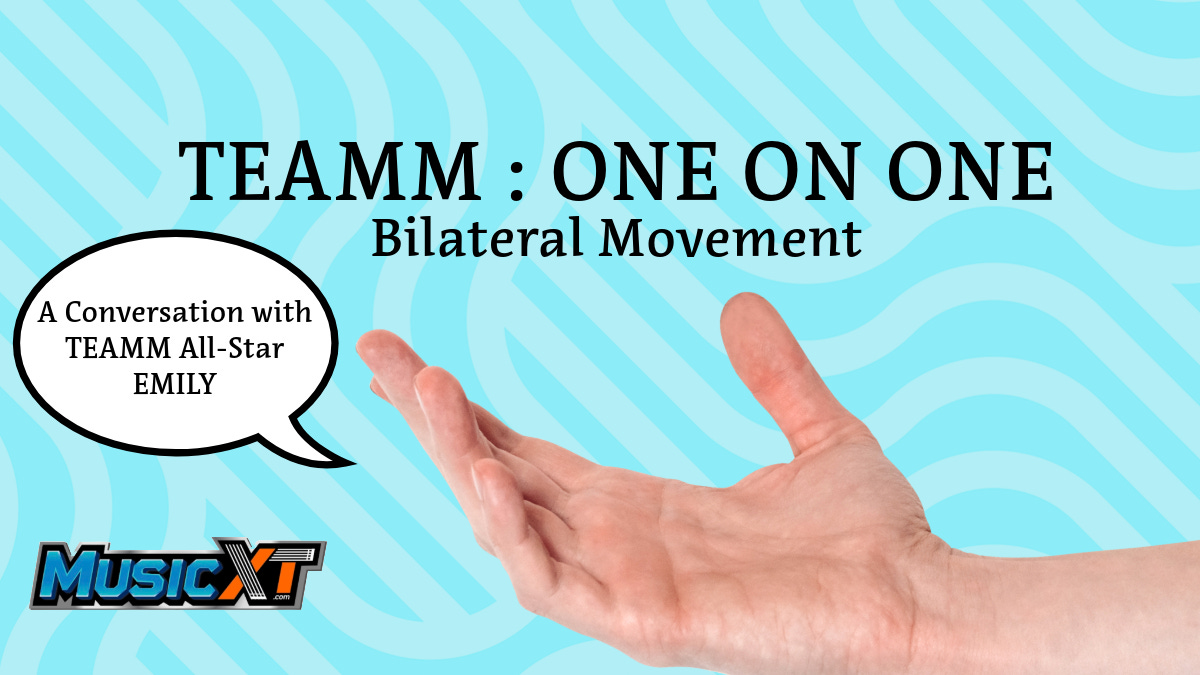Lately I’ve been enjoying some GREAT conversations with TEAMM subscribers, talking through some of the issues around Dalcroze practice and how to utilize these principles in their specific context. I learn so much from these chats, we have such a strong community of creative and insightful people! If you are interested in meeting with me to talk through some questions, you can message me on SubStack and we can schedule a time!
In this post I’ll share a clip from one of these conversations in which we talk about physical development, especially in terms of bilateral movement. Loosely explained, bilateral movement is any gesture that requires coordination of both sides of the body. In this case we’re referring to movement that crosses the midline of the body and engages both sides of the brain. I propose a few activities that help with this developmental skill in the video below. But first….
Housekeeping:
I was invited to present a virtual Dalcroze demonstration to a group of music education students at Georgia State University! Thanks to Tiffany English (AOSA Executive Director and friend of mine) for inviting me.
Are you following me on Facebook? CLICK HERE and FOLLOW MUSICXT!
Come hang out with me in Ohio! I’ll be presenting THREE sessions at the OMEA state conference in February. This will be a great opportunity to spread the word about Dalcroze in public schools and to bring more people into our community!
The reason I’m able to go to places like OMEA or NAfME or many of the other places I get to present is because of YOUR SUPPORT! If you think it’s good that more children get to benefit from the power of Dalcroze movement, then please consider joining our community and the TEAMM today!
From the Archive:
Just say "YES!"
When you start teaching through movement, you really begin to notice things about physical development. Children struggle with certain motions, coordination, and awareness at different levels. One of the benefits of this work is that it helps shepherd students through these levels, encouraging healthy development and growth, in ways that our school system often neglects. The connection between physical and intellectual development is well documented, but our schools don’t emphasize the physical part as much as they used to. I’ve heard tales of Kindergarten programs in the 1980s that wouldn’t pass a student who couldn’t skip. These days I have plenty of 2nd graders who struggle with skipping! (Old man yelling at clouds)
When TEAMM All-Star Emily agreed to chat with me I was happy to explore whatever topics came up in our conversation. She immediately wanted to talk about some lessons she’s been doing on right/left coordination and bilateral movement. I was glad to hear all the good work she’s doing on the topic and how encouraged she is by their progress. Emily is a SUPER experienced teacher and one who I admire for many reasons. Her passion for integrating Dalcrozian style movement into her mixed bag approach is so inspirational and I think a model for many others in the TEAMM!






